The rise of the I-beam marketer
Self-serve tooling created a boom of full-stack and T-shaped marketers. Modern marketers now also need a strong data foundation.
Tejas Manohar,
Nate Wardwell
August 15, 2024
|7 minutes

If you've spent much time reading about marketing roles, you've likely come across terms like "full-stack" or "T-shaped" marketers. The concept here is simple: marketers are shifting from just maintaining deep specialist skills to also gaining generalist knowledge across broader topics.
This trend is undoubtedly genuine but misses a more significant shift in marketing roles and skillsets: dependence on data. Effective marketing depends on data-driven personalization, analysis and insights, segmentation, triggered behaviors, and more. The modern marketer simply can't be successful without a strong data foundation.
We're now in the era of the "I-Beam" marketer.
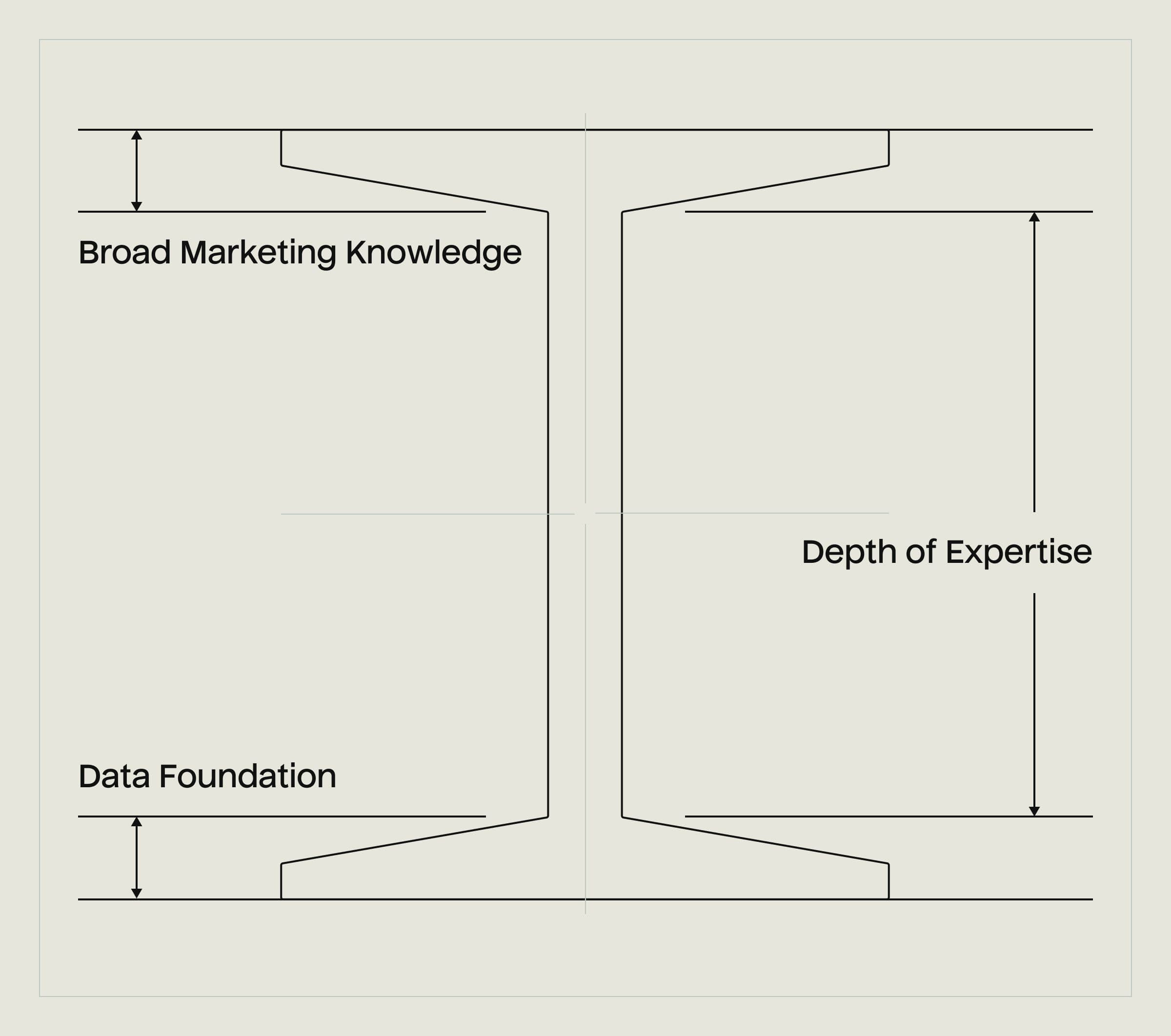
In this blog, we'll discuss the evolution of marketing into "full-stack" and "T-shaped" roles and how technology is enabling the next generation of I-Beam marketers to rise in their careers.
What is a full-stack marketer?
A full-stack marketer is a marketing generalist who can understand and manage multiple functions such as SEO, paid media, email, and content marketing.
Michael Calbucchi started the "full-stack marketer" discussion in 2013, observing the recent emergence of full-stack developers who could serve as jacks of all trades across startup tech stacks. Darrell Alfonso of Indeed summarized the full-stack marketer as someone who can "manage strategy AND see through execution," managing both the "front end" of customer journeys across channels and the "back end" of workflows and systems.

Source: SEMRush
Advancements in self-serve MarTech opened the gates for full-stack generalists by reducing the need for deep specialization and making it easier for one person to handle multiple workflows. While specialized roles like HTML email coders still exist, many marketers can now manage these tasks using self-serve tools. This allows them to control more of the customer journey across various channels.
AI tooling is also poised to accelerate marketing generalization. If marketers can rely on AI-powered tools to generate content, personalize campaigns, and optimize message delivery, they can again accomplish more with less specialization.
Marketing generalists at enterprise companies: T-shaped marketers
Typical discussions of full-stack marketing focus on small companies: with a limited headcount, these companies need to hire marketing generalists. Michael Haupt summarized this perspective: "It's unlikely that you will find full-stack marketing roles in established companies. These larger companies tend to do things the way they've always been done, and so their organization chart typically includes more traditional titles like Marketing Director, Social Media Manager, and PPC Analyst. In other words, each role in established companies has a specific function."
While enterprises won't hire full-stack marketers as individual contributors, managers certainly need to understand the functions they are responsible for. Similarly, any individual contributor who wants to rise into a manager position must develop understanding and skillsets outside of their narrow realm of ownership. CMOs are even feeling the pressure to generalize (see recent profiles in Forbes and The Wall Street Journal.
In other words, successful enterprise marketers, from ambitious individual contributors to CMOs, are "T-shaped." They have an area of deep specialization but still develop skills across other marketing disciplines.
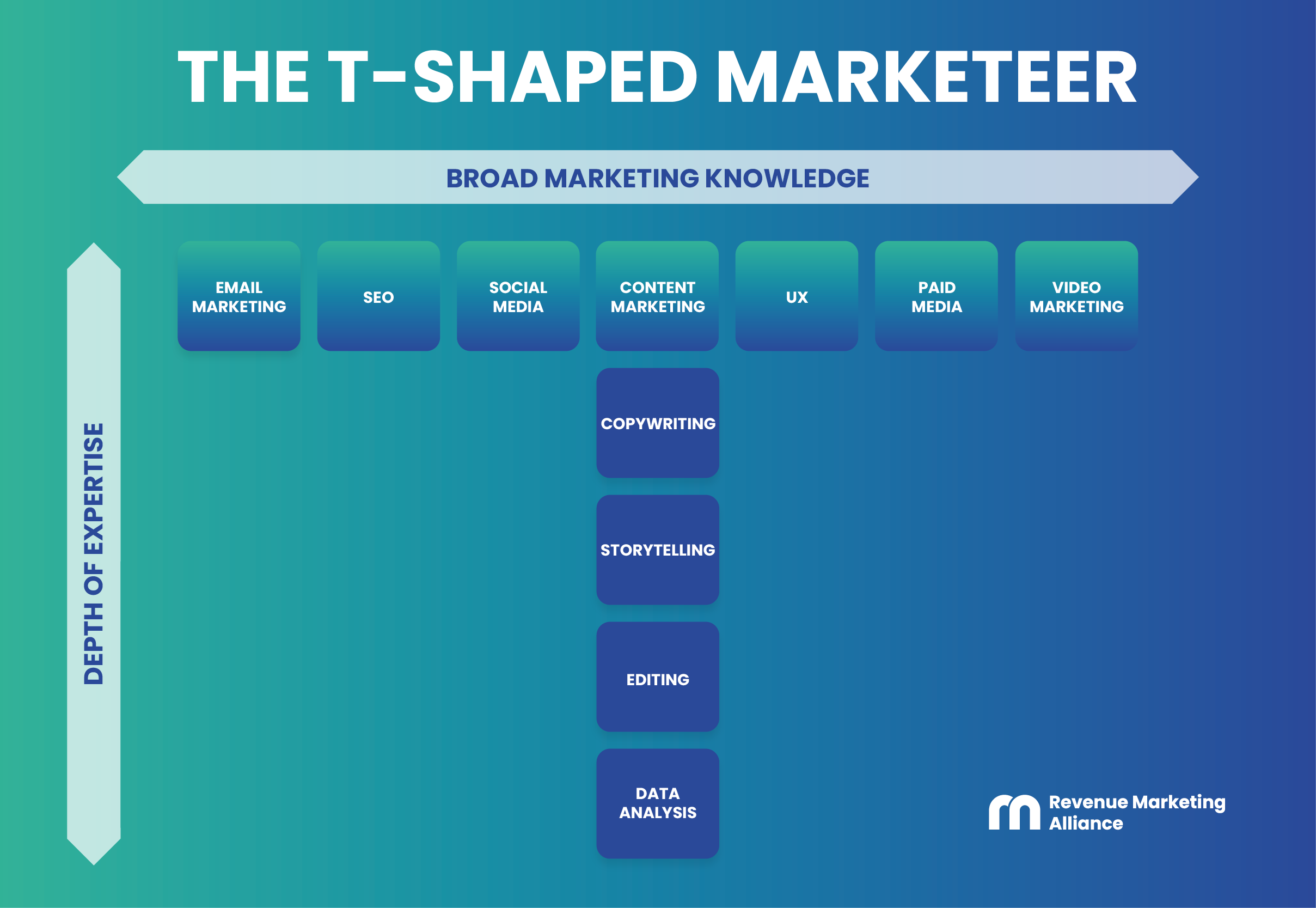
Source: Revenue Marketing Alliance
There are a few other variations of this—such as "pi-shaped" marketers with two specializations or "v-shaped" marketers with a few areas of varying levels of specialization—but the general trend of balancing role-specific specialization with broad understanding holds true.
The marketer of the future is an I-Beam
Increasingly, the most significant difference between an "ok" marketer and a "great" one is data competency. Marketers need analytical data to derive insights that inform future actions. They need customer data to build segmented audiences and power automated personalization. They need performance data to measure what's working and continuously run A/B tests to improve. They need unstructured data to power their next generation of AI tooling customized to their organization and customers.
The marketer of the future is an "I-Beam." They have T-shaped skills, balancing generalization and specialization, but are powered by a data foundation that informs their strategy and automates personalization.
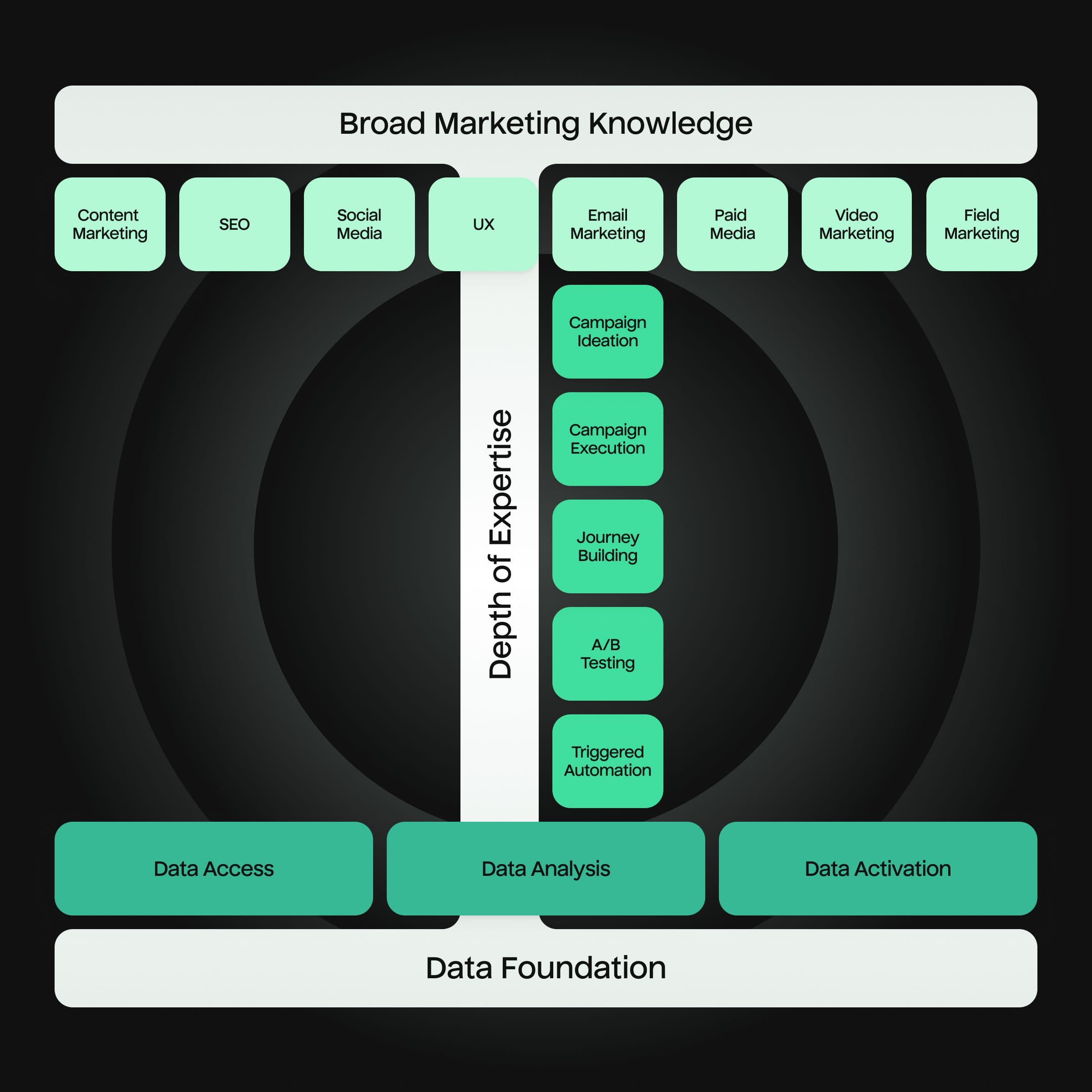
There are three defining characteristics of the I-Beam marketer’s data foundation:
- Access: The I-Beam marketer must be able to access data about their customers and campaigns, without excessive dependence on data teams or more technical users
- Analysis: The I-Beam marketer must be able to analyze their data to understand key trends, opportunities, customer behaviors, and more that will inform their campaigns.
- Activation: The I-Beam marketer must be able to turn data into action, such as by creating audiences to target on advertising and lifecycle marketing platforms.
The specifics of how marketers build capabilities for data access, analysis, and activation vary based on their specific company’s tooling and context. Some I-Beam marketers are fully SQL-literate, while others rely on self-serve tooling that simplifies tasks like data analysis and audience building.
How technology gives I-Beam marketers a better data foundation
The rise of self-serve MarTech has correlated with an increase in accessible data. As Chief MarTec Scott Brinker observed, we've progressed from a "first age" of marketing with siloed apps to a "second age" characterized by interconnected platforms, open APIs, and integrations that break down silos. This critical step made it easier for marketers to access consistent data across their tooling.
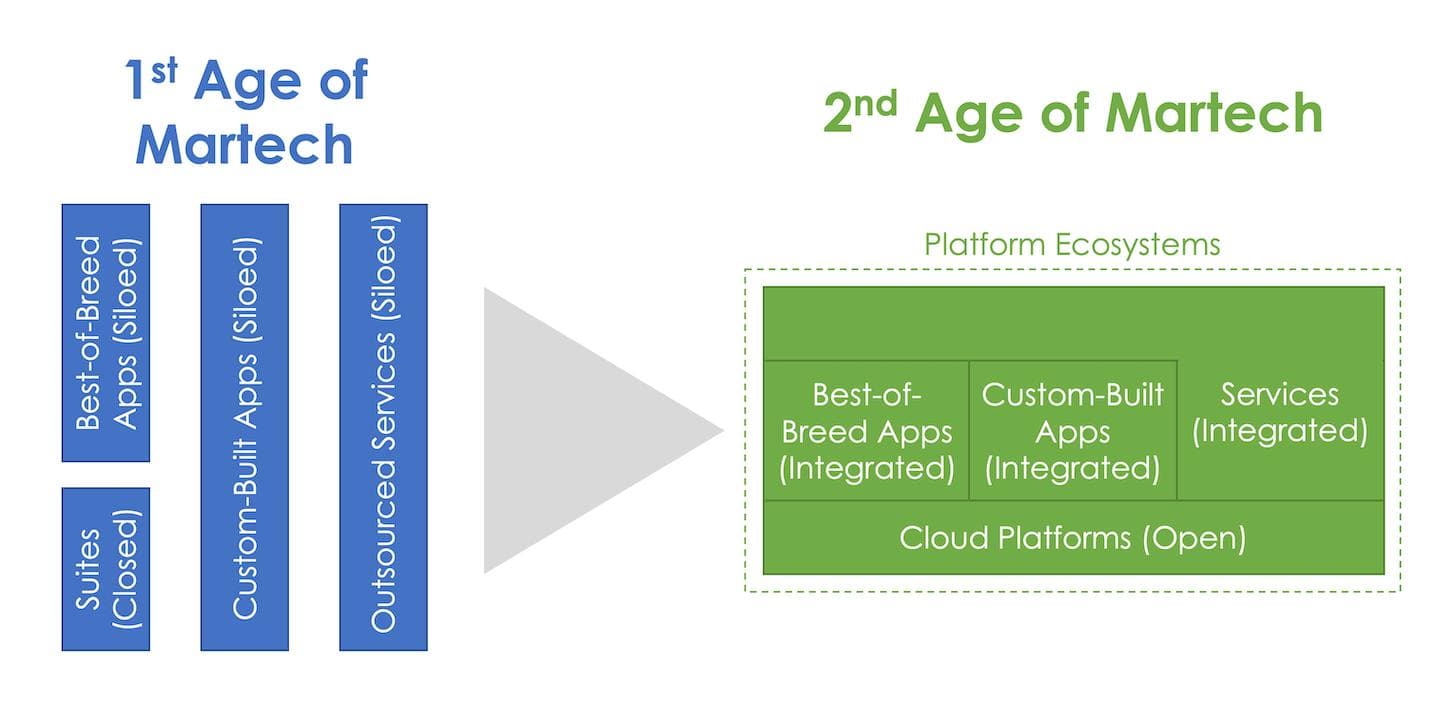
Another silo-busting evolution is the rise of the centralized data warehouse and composable applications that directly utilize its data. Companies with a composable strategy can run all of their marketing applications from the same central data source, making it easier for marketers to move quickly and personalize using the same data across their channels and tools. Composability has become a mainstream trend, evidenced most recently by Composable MarTech making it onto the latest Gartner Hype Cycle for Digital Marketing.
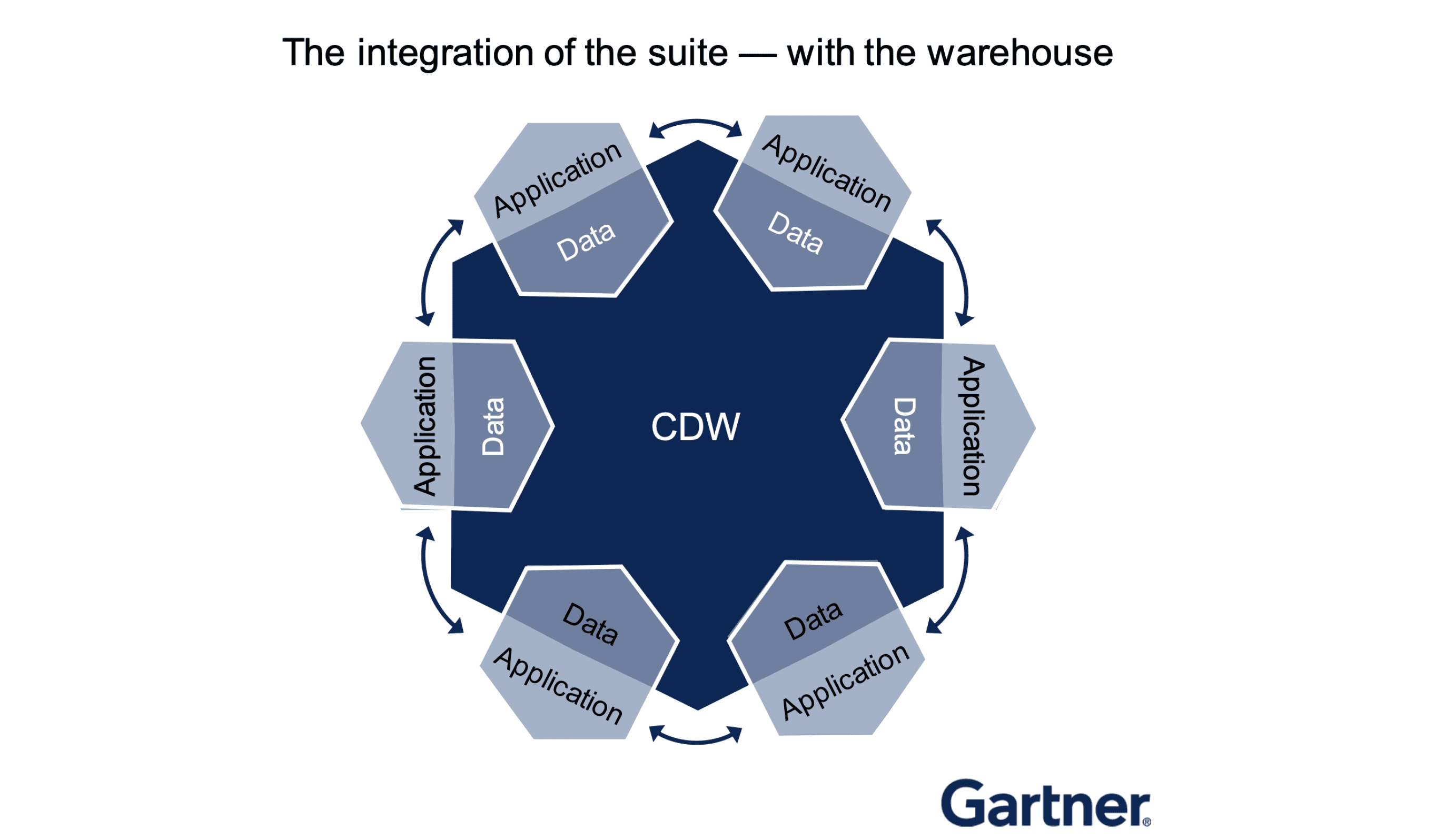
At Hightouch, we've been enabling I-Beam marketers with our Composable Customer Data Platform (CDP), which makes it easy for marketers to self-serve analytics, audience building, multi-channel journeys, and more directly from their data warehouse. Inside our platform, we see both specialists and generalists, individual contributors and leaders, engaging with data and using it in their daily workflows. From conversations with our daily users, we've seen firsthand how marketers have grown more effective, driven better results, and advanced their careers by leveraging their data in their day-to-day campaigns.
Closing Thoughts
Marketers need to develop generalist skills outside of their narrow specializations to grow their careers. Their success in any of these skill sets increasingly depends on their ability to access, analyze, and activate data, which is the foundation of an I-Beam marketer's success.
I'd love to hear thoughts from other marketers. Has a strong data foundation been a key differentiator in your career? Who are the best I-Beam marketers you've worked with?
Finally, if your marketing team struggles to access and use data, contact our solution engineers. We'd love to hear from you and see if we could help give you a data foundation that you can take action on.
More on the blog

Why every marketer needs SQL: interview with Fareed Mosavat (former Director of Product at Slack)
Fareed Mosavat (who has led product teams at Slack, Instacart, and Zynga) shares his experiences leveraging data to unlock product-led growth, barriers he had to overcome, and where he sees the space moving forward
Read











